10 Steps on How to Plan a Road Trip! Ultimate Guide!
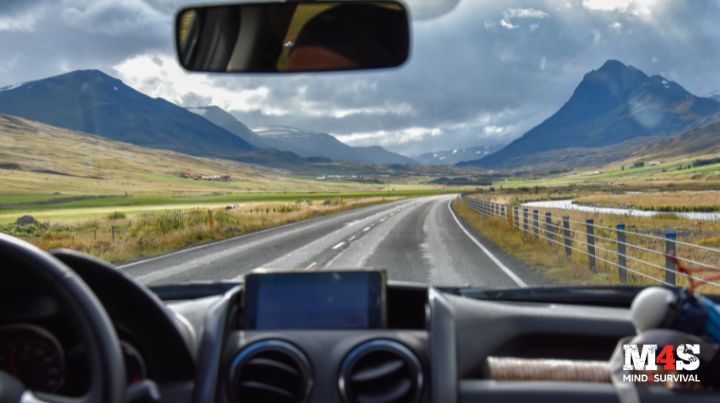

Podcast: Play in new window | Download
Road trips can be a lot of fun when you know how to plan a road trip. However, if you don't know how to plan your road trip and you're not prepared, you could wind up spending your trip dealing with problems rather than enjoying new adventures and relaxation.
While a road trip is a great way to see the country, it's essential to plan ahead, so you don't run into any problems. Without a plan, you could find yourself stuck at your wit's end in the middle of nowhere.
Don't worry, though. If you're unsure about your road trip planning, this article is here to help. This guide will walk you through everything from choosing your route to packing your bags. With our tips and tricks, you'll be ready for anything that comes your way on your next road trip adventure!
So what are you waiting for? Let's get going so you can hit the road!
What is a Road Trip?
First, let's start by defining what a road trip is.
The Cambridge dictionary defines a road trip as: “a long trip or vacation taken by car.” While that definition should expand to cover trucks, vans, buses, and even motorcycles, it's an excellent summary.
With that, road trips are typically taken by friends or family members, often stopping at various tourist traps along the way to an ultimate destination. While unplanned road trips can be great, the safest and often the best road trips are the ones that are carefully planned, with plenty of time left for spontaneity, exploration, and the perfect road trip.
10 Steps on How to Plan a Road Trip
Here are my 10 tips on how to plan a road trip.
1. Goal of Your Road Trip Journey
The first step of your road trip planning is to decide the who, what, where, and when of your next trip.
Determine who is going on your road trip and the number of road trippers joining you.
Next, plan where you'll be going. Is it a trip to national parks such as the Grand Canyon or another destination such as Disney World?
Finally, consider what kind of trip fun you'll have along the way and once you get to your final destination.
Ultimately, the goal of your road trip can be summarized in a mission statement that is similar to this:
“On “X” date 10 people (names) will drive to Grand Canyon / Disney World (road trip destination) where we'll relax at the pool, wander through the park, and stuff our faces.”
2. General Road Trip Planning
Now that you know when and where you're going, who is coming, and what you're doing along the way, you're ready to begin drilling down into your road trip planning.
Potential Routes
The first step of your general road trip planning is to select a few route options that will get your group to all of the places you intend to spend time visiting on your trip.
For example, if you'd like to travel from Southern California to Savannah, GA, for its monster St. Patrick's Day celebration, you may select Interstate 10, 20, 40, or a combination of them.
Your final decision will come after narrowing down your possible routes to your primary and alternate routes. The filtering down will depend on your road trip's goals and constraints.
Are you pressed for time and want to take the quickest route possible? Are you trying to conserve money so you'll plan your trip according to gas prices? Maybe there are specific sites you want to see along the way that dictate your travel choices.
The point is to start with a general idea of your routes, and as you plan your trip, make solid information-based choices to arrive at the best travel option possible.
Weather
Once you decide on the general outline of your adventure, it's time to begin researching the weather for your trip. If your road trip doesn't take place for a month or more, examine the historical weather trends along your potential route and at your final destination.
As the date for your trip gets closer, update your weather projections with the most up-to-date information possible.
Some weather issues to keep an eye on are the high and low temperatures for each day and any significant adverse weather that may occur.
Adverse weather events include rain, wind, dust, and so on. Are you heading to the Gulf Coast during tropical storms and hurricane season? Perhaps you're driving through the southwest, which experiences sand and dust storms.
Likewise, tornadoes ravage parts of the Midwest without warning, and winter brings ice storms, blizzards, and other weather events that can make travel hazardous and shut your trip down.
By staying informed about the weather, you'll be better prepared to make needed adjustments to your trip and will be more likely to have an enjoyable road trip no matter the weather.
Crime and Civil Unrest
Next, examine the local crime statistics for your routes and destinations along the way. Perhaps one area is safer to stay or travel in than another. Maybe some areas are fine during some hours and become less secure during other times of the day or night.
Developing an awareness of the crime trends along your route will arm you with the information you need to decide when and where to go and when and where NOT to go.
For example, if you have to drive through a central metropolitan area, your research may convince you to go around it or to only move through it at certain times. After all, a wrong turn or unforeseen breakdown at the wrong time and in the wrong place can leave you stranded and in danger.
Don't stop your research on crime by looking only at historical statistics. You should also check on the potential for protests and civil unrest to occur along the route you intend to explore. The last thing anyone needs on a road trip is to find themselves in the middle of a large-scale mess.
So, plan accordingly. Do your research and use your road trip planning to help minimize any problems along the way.
Supporting Resources
Next, consider the people, places, and things that may be able to assist you if you need them.
Consider friends, relatives, and other loved ones who may be a valuable resource during a road trip in a time of need. Likewise, consider public safety, such as law enforcement, fire, and E.M.S.
Helpful locations can include hospitals, truck stops, and other areas that are typically safe, secure, and helpful.
Likewise, look at roadside assistance options such as the American Automobile Association (A.A.A.), Good Sam Club, and others.
Other resources that can help with your trip planning include apps such as Trip Advisor, Gas Buddy, Waze, travel blogs, and others. Together, your supporting resources will help you to plan and enjoy the trip exactly how you want to experience it.
3. Specific Route Planning
Now, it's time to focus on where you're going and how you will get there. When planning road trips, you break down your trip planner into two essential elements.
Those two elements are the number of vehicles on your road trip and the individual phases you'll experience during your road trip.
Determine the Number of Vehicles
First, consider the number of vehicles you and your party will use on your road trip. If your adventure includes just you and a friend or two, you may only have one car. However, if enough people are going, you may have two or more vehicles involved.
Decide Upon Your Phases of Movement
Once you know how many vehicles will you be traveling in, you'll be ready to look at the different phases of movement for your itinerary. Moving from one place to another is a phase. Another phase is doing something once you get somewhere, such as going to your hotel room, eating, wandering around the amusement park, or lying on the beach.
For your road-tripping plans, phases will look something like this:
- You leave your home and drive to pick up your in-laws.
- Everyone grabs a bite at your in-laws and talks about the trip.
- You then move to the beach.
- Everyone lays out and gets sunburnt and sandy.
- You drive everyone to the hotel.
Detailed Map Recon and Route Planning
With your vehicles and phases sorted out, it's time to plan your trip's individual movement phases.
Your detailed route planning will fill in your on-the-road gaps between each destination, stopover, and all of the exciting places you have on your itinerary.
You can plan your driving phases by using Google Maps, Google Earth, or other interactive mapping and planning apps to select and refine your specific routes.
Planning your individual travel segments allows you to better understand your routes and make better pre-trip planning decisions. You will also be more informed if you have to make adjustments on the fly while in the middle of your road trip.
Depending on your software, you can lay in G.P.S. waypoints, or when using software such as Google Maps, you can draw your road trip maps directly into the software.
Checkpoints / Phase Lines
As you work through Google Maps with your road trip planning, include a few phase lines for each day of your road trip planner. Phase lines include major road intersections, bridge crossings, etc., that help you mentally and physically divide your trip into more manageable bite-size travel segments.
Phase lines, in effect, are segments within the larger phase of a move between one location and another. Be sure to label them on your map so you can more easily keep track of your progress and location.
Another good practice made easy with Google Maps, other software, and road trip apps is knowing the distance and driving time between locations. This can help ensure you stay on course and provide extra time to enjoy your visit to the destination on your itinerary.
Safe Havens
When planning your routes, it's vital to include safe havens along your road trip route and for each destination you stop at.
Safe havens are locations that you can reasonably assume offer an increased level of safety and security should you encounter trouble along the way.
Typical safe havens include police stations, fire stations, hospitals, military bases, and other 24-hour locations with security and a large number of people.
As you plan your trip, mark your designated safe havens on your map with their location, address, phone number, and other relevant contact information.
PACE Plan
As you plan your routes, use the PACE Plan methodology to plan primary, alternate, contingent, and emergency routes. The PACE Plan will help guarantee that you travel along the most scenic route, off the beaten path, or along the best open road, depending on your preferences and trip goals.
Pre-planning your routes will also help you avoid toll roads, difficult back roads, and other obstacles. Likewise, your road trip planning can help save money if saving money is a goal. Your road trip planning will help you locate a gas station with a lower fuel cost than others.
Solid route planning can help you to save not only money but time as well. A well-planned road trip can save you a half-hour here and fifteen minutes there. Your time savings on longer road trips can add up over several days.
Create a Map
Finally, once your routes are set, you should print a paper map copy of your overall trip. Doing so will be helpful when you find yourself in an area with limited connectivity, or that isn't well-mapped in your mapping software.
Also, having a hard copy of a map is super helpful when trying to study your route along the way. If you are a member of AAA, they will provide you with a detailed map called a TripTik for anywhere you may be headed.
When creating your map, you should consider making an overhead view of where you will be staying or the attractions you will be visiting. By doing so, you'll be able to familiarize yourself with the layout of where you'll be so that you have a better idea of how to respond should something happen.
A hard copy is not an interactive map such as Google Maps. Therefore, it's a good idea also to make sure you're as set as your connection allows with an interactive map capability.
4. Vehicle Planning
With your route planned, it's time to address your vehicles. Start by knowing who is in which vehicle. While it's not always necessary, having assigned seating can help you know who is where and how they're doing when an emergency happens.
To help with that, appoint at least one person in charge of each vehicle. That person is responsible for ensuring everyone is accounted for before the car starts moving. Accountability means physically seeing and directly communicating with each person in the vehicle. If that does not happen, you will risk leaving someone behind.
Lastly, your road trip planning should include considerations of key F.O.B.s. The last thing you need on a road trip is to have a missing or damaged key F.O.B. prevent you from enjoying your trip. So, consider who has key F.O.B.s and where they are kept, and you will help with any stuck driving nightmares.
Vehicle Timing
Now, it's time to plan your travel times, such as when you're leaving one place to arrive somewhere else on time. Planning travel times is best accomplished through backward planning.
Backward planning begins with planning from the time you need to arrive at your destination and working backward through each phase of your road trip until you reach the time when you should load your vehicles and head out.
Some actions and times to consider when road trip planning are:
- Load: This is when you want people to be at the vehicles, preparing them and their stuff for the road trip.
- Stage: This is when you want everyone in the vehicle ready to start driving on your trip.
- Depart: Now it's time to put your planning into gear, fire up your Google Maps, and head out on your road trip!
When planning your times, remember you will need separate timelines for each group of vehicles coming from different locations. And as mentioned previously, don't forget backward planning to ensure everything is accounted for.
5. Destination Planning
Now that you've planned how to get to your destinations and stopovers, it's time to plan the details of what you'll be doing at the stops on your road trip.
Considerations include where you'll be staying, such as in a hotel, Air BnB, or elsewhere. Similarly, this is where you'll begin thinking about how to do things at the amusement park, beach, or other points of interest.
Lodging Considerations
When it comes to enjoying a safe experience with your lodging, you should begin by considering and exploring where you will stay as you book hotels on your road trip.
As you dig into your road trip planner, use the apps I mentioned to review the hotels, Air BnBs, and other locations you plan to stop in. Read the location reviews and look for anything that makes you feel concerned about that location.
Some considerations are cleanliness, safety, security, and other similar review items that give you pause when thinking about staying there.
Another consideration is what floors you will be on. While a first-floor room is excellent for evacuating a location during an emergency, a second-floor room is more difficult for an intruder to penetrate.
Actions to Take Upon Arrival
Your efforts to ensure a fun and safe road trip experience shouldn't end in the planning phase. There are actions you and those with you can take upon arriving at your destination to help ensure you have a great time.
First, when arriving at a hotel, Air BnB, or other location, have a plan for who will go in and secure the rooms while the others wait with the kids in a safe area. Once the rooms are secured, an adult or two should go into the rooms to make sure no unwanted surprises are waiting inside.
Once settled, the adults should each work in an opportunity to a walk around the hotel or Air BnB home. Walking the property will help provide a sense of the attitude of people there and an understanding of the layout should an emergency happen.
While walking around, examine what rooms have exterior access and where that access leads. Look at the external access from the perspective of evacuating in the event of an emergency and with the mindset of entering the building from an intruder's perspective. Ideally, you will want easy egress during an emergency and difficult ingress for an intruder.
Sleeping Plan
Your road trip planning should include a sleeping plan if there are enough people. Who is sleeping in what rooms and where? While this isn't as important for a small number of adults on an all-adult trip, it's imperative when children are on the road trip.
Knowing where the adult's bedroom is in relation to the children is critical. Is the main bedroom where the adults will sleep at the end of a hall, with the children's bedrooms in between the main bedroom and doors into the property?
If so, you may want to reconsider the sleeping arrangement so that any intruder or sneaky kid looking for a night adventure has to make it past mom or dad first.
Security
Regardless of where you stay, make sure you designate someone, if it is other than you, to be responsible for securing the house/room at night.
This person should walk the property, ensuring that everything that should be secured is secure. They should also visit the vehicles and check on them.
Likewise, the designated security person should be tuned into anything that looks or feels out of place or off. If they find anything that is out of place or feels off, they should find out why it seems that way. Don't be the person who, after the tragedy, says, ‘I thought something didn't feel right about that.'
Attraction Considerations
With your lodging needs met, it's time to consider the details of the best part of the trip—the places you've traveled to—so you can have fun and experience!
If you're going to a large venue, does everyone have a map or understand the location's layout? Where are the exits out of the venue and to the car?
When planning a road trip, you will also need to create a plan for what to do if anyone in your group gets separated.
This plan tells your children where to go if they become lost. During this part of the plan, you should also tell children that if they feel in danger, lost, or threatened, it is okay to SCREAM! After all, a child's screams get people's attention. So, scream away!
While it takes time, planning what to do when you get to your destinations doesn't take much time.
In the end, a little prevention and preparedness on the front end can help avoid many problems on the back end. And that is an excellent recipe for turning a potential mess of a road trip into a journey of fun and entertainment.
6. Responding to Problems
Hopefully, you've done everything you can to minimize the potential problems during your road trip. And, even when you've done your best, problems may arise that you will have to deal with.
It's important to remember you're on a road trip, and the goal is to have fun and explore new country. Therefore, you must be flexible and understand that situations change. Good things and bad things happen that you, as the person running the show, may need to flex on.
A new restaurant has opened, and people want to go there instead of elsewhere. There's a fire at a chemical plant, etc.
In the end, while every problem is unique and fluid, here are some essential mindset tips to help you consider your options when responding to a problem during your road trip.
Threats and Dangers Enroute or at a Location
- Secure Your People: Make sure your family and loved ones are safe and secure!
- Get Away From the Threat: Establish time and space between yourselves and the threat.
- Deal with the Threat: If you can't get away from the problem, deal with it.
- Call for Help: Call for help as soon as possible during the event.
- Move to the Nearest Safe Haven: If things don't resolve, move to your nearest and most accessible designated safe haven.
Splitting Up
Splitting your group, while most likely uneventful, is always a problem. By splitting your group, you now have people spread over a wider area who, in the event of an issue, must find their way to a safe place and back to one another.
A good rule of thumb when splitting up a group and explaining the situation is the Five-Point Contingency Plan.
The Five-Point Contingency Plan (G.O.T.W.A.) stands for:
- Going: Where are you going?
- Others: Who are the others going with you?
- Time: What is the time of your arrival and return?
- What to Do: Explain what to do if you don't return.
- Actions: Explain the actions to take if you don't arrive, return, or something happens while you're gone.
7. Specialty Tasks
Medical
During your road trip planning, make sure you or someone else plans for medical issues. You don't have to be a medic to have a stash of over-the-counter medication with you so no one who becomes ill ruins the trip for themselves and others.
Also, knowing the basics of first aid, emergency bleeding control, and CPR offers a huge lifesaving reassurance to your road trip.
With that, consider what if someone gets sick or hurt. Who is going to handle it? Who is going to call 9/11, and who will post up somewhere to help escort E.M.S./Public safety to the person in need and brief them on what's happening?
When meeting E.M.S. or others who are coming to provide medical aid, the M.I.S.T. report is an excellent way to ensure that you include all pertinent information.
The M.I.S.T. Report Stands for:
- M: Age/sex, mechanism of injury, or medical complaint
- I: Injuries or inspections
- S: Vital signs
- T: Treatment given
Likewise, the AMPLE method of evaluating a person helps to pass on all of the needed information:
A.M.P.L.E. Stands for:
- A: Allergies
- M: Medications
- P: Pertinent Medical History
- L: Last Oral Intake
- E: Events leading to the present situation (rule out trauma vs. medical)
Navigation
Another critical consideration when road trip planning is having someone track your progress as you drive across the country.
While some may question the validity of having a person monitor the road trip progress in the age of G.P.S., it will make sense when traveling in a remote area of our national parks or some other location with limited G.P.S. or Google Maps coverage.
You're mistaken if you think lack of G.P.S. coverage happens few and far between. For example, when living in Las Vegas, my G.P.S. had not been updated to include the residential neighborhood I lived in, which was built years ago.
In the end, making sure someone always knows where you are and is aware of options in case your primary navigation system fails you is a reasonable consideration when the safety of you and your kids is involved.
Designated Drivers
When road trip planning, a capable person must be designated as the primary driver.
While a person is designated as the primary driver, it's critical to know that drivers can be swapped out. After all, driving while tired on a road trip is a recipe for disaster. Don't drive tired!
The primary driver's responsibility is to ensure the vehicle is ready for driving and get the car serviced.
That means spending some time before loading up and after getting to your destination checking out the vehicle. Check the oil, tires, belts, fuel, and hoses. Look for any leaks. Make sure the spare tire is aired up and serviceable. Clean the windows. Dump any trash, and make sure the vehicle is always set for driving.
Also, the driver is a great option to make sure to pack some water, drinks, healthy snacks, or junk food if that's your thing. If packing fruit and such, consider packing a small cutting board to quickly and cleanly divvy up your apples and other snack options.
Vehicle Leaders
Every vehicle should have someone as the vehicle leader. Typically, this is NOT the driver because the driver should focus on the car.
The person in charge of the vehicle is, among other things, responsible for confirming everyone is accounted for and loaded up. Accountability should include a VISUAL check that each person is in the vehicle.
Not doing a visual confirmation that each person is present sets the stage to leave someone behind due to an assumption that you hear someone or that someone not heard is there. Be deliberate, or you may leave someone behind.
A vehicle leader will often be the same person monitoring the journey's progress and handling any issues that arise.
Security
I discussed this earlier, and it's important enough to mention it again.
During your road trip planning, at least one person should be designated to be responsible for the security and safety at your destination.
This person will be the one who checks the rooms before the rest of the family settles in, despite being exhausted from a day of vacation fun. Likewise, this person should be responsible for ensuring the doors and windows are locked at night.
Finally, when departing, the security person should check the rooms, under the beds, in the closets, etc., to make sure nothing and no one is left behind.
Alternates
Having an alternate to take over if something happens to one of the people filling a specialty task role provides you with a backup option should your plans blow up.
Designating this person before the trip provides a great teaching opportunity and helps people feel involved.
8. Communications Plan
Communications
You should provide everyone on the trip with a physical hard copy contact list they keep with them, which is entered into their phone. The contact list should include everyone else who is on the trip, as well as other critical trip-related contacts.
By providing everyone with a contact list, you ensure everyone can reach out to everyone else should the need arise.
Communications Plan
Your plan should include who will call who and when.
Who is responsible for calling 9-11? Rather than have everyone trying to contact someone simultaneously, have a call tree ready to go.
A call tree helps people avoid duplicating efforts and will offer a more effective use of people's power when needed.
Electronic Tracking
Electronic tracking through items like Apple's Air Tags or other similar trackers is an excellent consideration for your trip. You can put on G.P.S. trackers children, parents, cars, luggage, etc., allowing you to instantly locate a lost loved one or misplaced items quickly when seconds may matter.
Designated Contact Person
When traveling with a big group, designating one or two people to handle hotel check-ins, ticket buying for amusement parks, etc., will help avoid the chaos that can happen with a large group.
By selecting someone to take care of your group to interact with others, the remainder of your party will be set to keep an eye on the kids and make sure the vehicles are safe and secure.
9. Briefings, Brief Backs, and Questions
With your road trip planning ready, it's time to share it with others. And, if you've gone through this entire process, you have a lot of detailed information to share.
Explain the Plan Generally vs. Specifically
Remember, though, that not everyone wants or needs all of this information. Who you tell all of the plan or part of it to is dependent upon you and them.
So, be smart, reasonable, and empathetic when briefing your road trip plans. When you encounter someone who does not want to hear the whole plan, give them a brief overview. Hit the high points and give them enough to know the general concept of your overarching trip plan.
Some areas to consider focusing on during your briefing should include:
- How to handle medical issues
- Dealing with breakdowns
- How to handle accidents
- How to handle becoming separated (KIDS!)
Brief Backs & Questions
Once you've briefed your plan, ask if people have questions. Remember, this is a learning experience for others, not a time for anyone to put themselves on a stage and show off all they know. So, provide the opportunity to ask questions.
Next, after everyone's questions are answered, take a few minutes to ask people to explain different parts of the plan and how to do things when they happen. This will help reinforce the lessons learned and may make people feel more involved, confident, and capable.
10. What to Pack for a Road Trip
Lastly, you need to consider what to pack for your road trip.
To keep this article as concise as possible, I will assume you have the basics of your trip, such as clothing, toiletries, sunscreen, and the rest covered for your trip. With that, this will cover some possibly not-so-often-considered items for what to pack for a road trip.
Individual Items
Individual items are the first items to consider when determining what to pack for a road trip beyond the basics. Personal items are those items that are specific to a person's condition, needs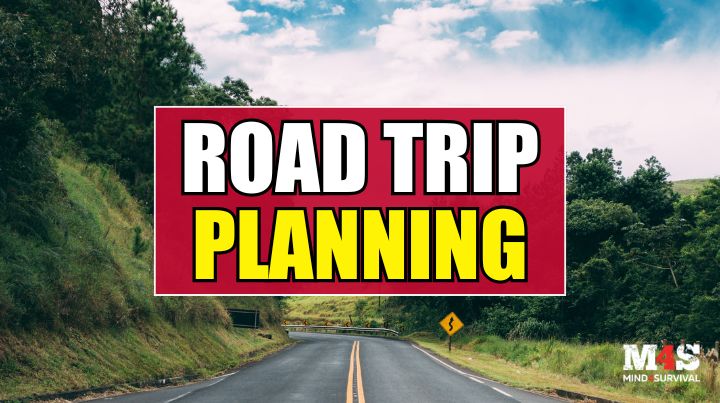 and wants.
and wants.
Defensive Items
While we all want a road trip to be fun and free from criminal drama, today's world demands that we be prepared for the potential for violence. Therefore, it's vital to consider defensive items in your travel plan.
The first consideration should be the legality of any defensive items you intend to bring. Not only should they be legal in your state, but they should be legal in each state you plan on traveling through.
Also, check on how the law requires your defensive items to be transported and stored in other states. Don't let your trip be ruined by an uninformed run-in with law enforcement.
Some defensive items to consider besides firearms are stun guns and pepper spray. And, if you're transporting defensive items with children around, keep them locked up in a travel gun safe.
G.P.S. Trackers
In today's world full of crazies, keeping track of your children is more important than ever. With G.P.S. trackers, you can know their exact location at all times, giving you peace of mind and ensuring their safety.
There are various GPS tracker models available on the market, each with its own set of features. Some trackers are designed for use in cars, while others can be attached to clothing or even placed in a child's backpack.
You can also use G.P.S. trackers to track luggage, vehicles, and even adults. And when you're done with your trip, you can remove or shut down some or all of your trackers.
In the end, no matter which model you choose, a G.P.S. tracker can provide invaluable peace of mind.
Doorstop
Unlike your home, you don't control the keys and other access measures to your living and sleeping areas when staying in a hotel, Air BnB, etc.
Therefore, you can not be assured of who does and does not have access. At a minimum, you can ensure that more people than you and your group have access to your location.
One way of minimizing the risk of not having sole control over the access to wherever it is you stay is through a heavy-duty doorstop. When practical, a doorstop will, at a minimum, delay entry through a door and hopefully prevent unwanted access.
Either way, it's a plus for you. So, consider packing a doorstop or two on your road trip.
Hanger Diversion Safe
A Hanger Diversion Safe is a great way to keep your valuables safe and hidden on the road. Whether traveling cross-country or just taking a weekend trip, a Hanger Diversion Safe can give you peace of mind knowing that your belongings are hidden as well as possible.
The hanger is designed to blend in with your clothes, making it inconspicuous and difficult for thieves to spot. The safe portion of the hanger is easily accessible, so you can quickly grab your valuables when needed.
Best of all, the Hanger Diversion Safe can be used repeatedly, making it an excellent investment for any traveler. Next time you hit the road, bring along a Hanger Diversion Safe – it might just save your trip!
A Supply of Individual Medications
If you're taking a long road trip and want to make sure you have plenty of medications, there are ways to get ahead for you and the needs of your loved ones.
First, speak with your doctor and explain that you plan to be on the road for an extended period. Many doctors will consider writing prescriptions for several months out or more if there is a need.
If your doctor does not meet your need, consider researching expatriate forums, where people who live and work overseas discuss how they manage their life on the road.
Some people turn to international options, which can be helpful and problematic. Overseas options may not meet the same legal and quality standards in your home nation. If you receive a package of medications that are illegal to import or acquire in the manner you have, you may run afoul of the law and find yourself in a jam.
Group Items
Medical Kit
Accidents can happen, and people can become ill, even on the best of road trips. That's why it's always a good idea to be prepared by packing a vehicle medical kit.
This kit should include everything you need to treat minor injuries, such as bandages and antiseptic wipes. It should also have more serious supplies, such as a splint and a tourniquet, in case of more serious injuries.
Also, consider adding a variety of over-the-counter medications should someone become ill on the trip.
By being prepared for anything, you can rest assured that you'll be able to handle whatever comes your way on your next road trip.
Food & Water
You should pack your favorite road trip snacks and drinks, as well as emergency food and water. By packing long-term food options, you'll be prepared when you get lost or stuck on a highway or in the backcountry of our national parks.
Go-Bags
Space may be limited on a road trip with a carload or two people. If space is tight, consider packing a go-bag or two for the group. And, if people bring their clothes and personal items in backpacks or roller bags, everyone will be set to carry or roll their things with them.
For children, the group go-bags allow you to carry their basic needs while shifting any clothing or other needs into someone else's roller bags. If the children are old enough, they can roll their own bag or carry their backpack.
Vehicle Items
Tire Inflator
Properly aired tires are critical for vehicle safety and tire life. As you log road trip miles, your tires may lose some air. When that happens, you need a tire inflator to yourself heading down the highway.
Jacks
If a tire blows, you'll need to get it changed, and if A.A.A. or another service isn't available, you will be stuck on the side of the road if not prepared. Not only should you have a jack, but you should also know how to change a tire. Learning to change a tire includes practicing changing your tires before heading out on the road. And, if you're going to practice changing a tire, get others in your road trip group involved, so they know how to change a tire.
Jumper Cables & Jump Starters
No one wants to be stranded on the side of the road, but it can happen to even the most prepared driver. That's why it's always a good idea to have jumper cables and a jump starter in your car, just in case.
Jumper cables jump-start a dead battery by transferring power from another car. Jump starters are similar, but they're self-contained units that don't require another vehicle. Both can be lifesavers if your battery dies while on a road trip.
Jumper cables are relatively cheap and easy to use, so they're a good option. However, while jump starters are more expensive, they're also much easier to use – especially if you're alone. Simply attach the jump starter to your battery and turn it on. Some models even come with built-in chargers, so you can keep them charged and ready to go.
Either way, having jumper cables or a jump starter in your car can give you peace of mind on your next road trip.
The Bottom Line of How to Plan a Road Trip
Planning a road trip can be daunting, but by being prepared, you can rest assured that you'll be able to handle whatever comes your way.
The best way to prepare for a road trip is to have a systematic process that dials in and covers all the areas of the trip.
By planning your road trip well, you'll be ready to have an incredible vacation and time on the road.
Have you taken a road trip? If so, what lessons did you learn? Tell us your story in the comments below.
Stay safe,

Additional Resources:
2 Comments
Leave a Comment




Join Mind4Survival!
Stay informed by joining the Mind4Survival! 100% Secure! 0% Spam!
Follow Us!
Affiliate Disclosure
Mind4Survival is a free, reader-supported information resource. If you make a purchase through our link, we may, at no cost to you, receive an affiliate commission.


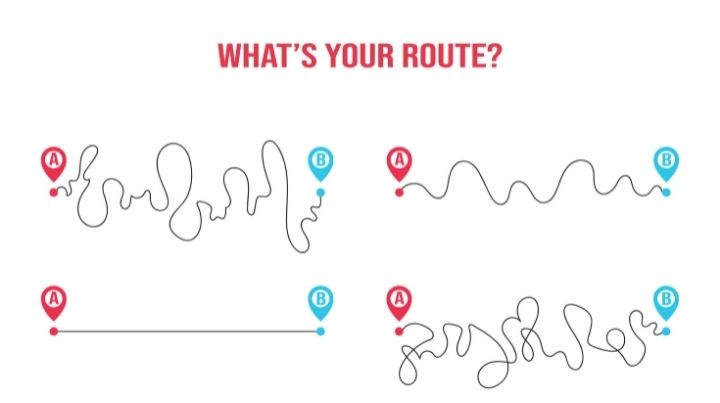


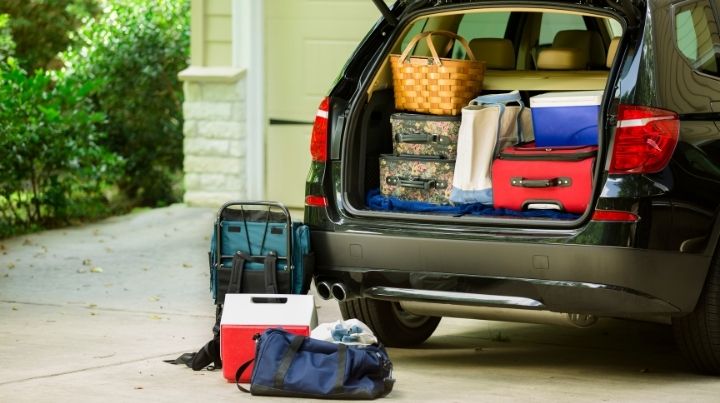









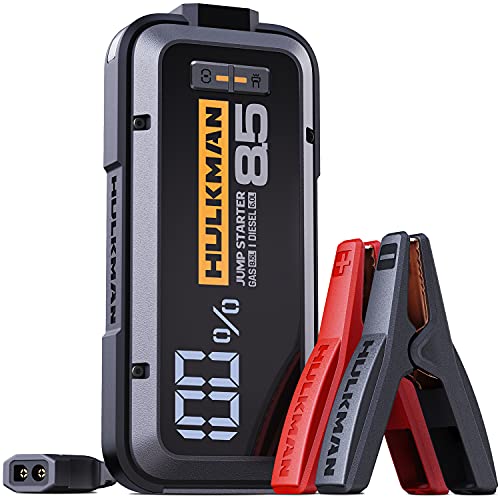


Great suggestions and lists of what you need. You are the first I’ve read suggesting door stop – something we always carry. Another great article. Thanks!
Thanks! I wish I could claim credit for the doorstop. That credit goes to two great Americans and friends – George and Ed. Thanks for commenting. ~Stay safe! ~Brian